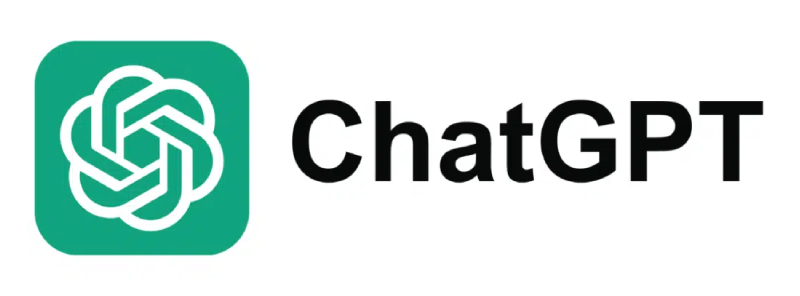Key takeaways
- A mutual release is a powerful tool for resolving disputes quickly without going to court. Use it to prevent lengthy, costly legal battles and safeguard relationships
- When drafting a mutual release agreement, ensure the agreement clearly defines the claims you’re waiving and the parties exempted. Also, maintain transparency during negotiations to keep the contract legally valid
- For high-volume agreements, use tools like Docupilot to automate the creation process. This saves time, ensures consistency, and reduces the risk of errors
Breach of contract happens! Even in the best agreements and partnerships. When it does, rushing to court isn’t always the best option as it drains time, money, and goodwill.
A mutual release agreement offers an efficient way to waive claims, save resources, and preserve relationships no matter the level of disagreement. Even when disputes arise outside contractual relationships like accidental damage or informal promises, you can still resolve them with mutual release agreements.
Before creating one, you need to understand the benefits, common pitfalls to avoid, and the key clauses that ensure maximum protection.
But first…
What is a Mutual Release Agreement?
A mutual release agreement is a legally binding contract where two or more parties agree to release each other from any current or future claims, liabilities, legal actions, or contractual obligation related to a specific dispute or contract.
Either party can propose this agreement during negotiations. However, it becomes a mutual release when all parties waive their obligations and right to legal claims; if only one person does (called the prevailing party), it’s a unilateral release.
Examples of Mutual Release Agreements
- Business Disputes Settlements: Resolves disagreements over contract breaches, intellectual property rights, or partnership dissolutions
- Employment Termination Settlements: Employer offers a payment called severance package and employee agrees not to pursue legal actions like wrongful termination or discrimination
- Personal Injury Settlements: At-fault party in an accident (e.g., car accident or slip-and-fall) offers compensations and the injured party agree not to pursue legal actions
- Real Estate Disputes Settlements: Applied in contract cancellations for property purchases, tenant-landlord disputes, or property ownership disagreements
- Debt Settlements: Debtor agrees to pay a portion of the owed amount, and the creditor agrees to discharge the remaining debt
Disputes arising from prior agreements like employment contracts, lease, or purchase agreements may already include a mutual release clause within the dispute resolution or settlement terms. However, do not substitute this clause for a standalone mutual release agreement when disputes occur.
Gordon Hirsch, founder and managing attorney at Hirsch Law Group explains the importance of creating separate agreements:
“When disputes arise, the emotions and stakes can get pretty high. Even if the original contract has a release clause, having a separate agreement specifically for the resolution of that dispute can provide clarity and finality. It's like putting a big, bold stamp on the matter saying, ‘This is over.’ It helps to avoid ambiguity about what was agreed upon during the heat of the conflict.”
What are the Benefits of a Mutual Release Agreement?
In the intro, we hinted that mutual release agreements are the faster, more cost-effective, and amicable alternative to litigation. Now, let’s get into the specifics of how they benefit you.
Prevent legal battles and ensure a quick new start
When Elon Musk laid off about 80 percent of Twitter’s workforce after acquiring the company, he paid severance packages to ensure employees waived any future legal claims. This move helped him implement sweeping changes without being bogged down by lawsuits.
Using a mutual release agreement this way gives you a fresh start and peace of mind while shielding you from the unpredictability of court battles.
Preserve reputation and relationships
Litigation can drag on for years, filled with heated confrontations and arguments. This often deepens animosity, damaging professional and personal relationships, sometimes beyond repair. Also, legal proceedings are public, meaning any dirty laundry gets aired for the world to see, tarnishing your brand reputation.
Save cost and time on litigation
Legal battles are draining in every possible way—from expensive attorney fees to the time and stress they cause. The stakes get even higher for the losing party, who ends up not only paying legal costs but also damages. A mutual release agreement simplifies this by requiring only the agreed-upon consideration, allowing both parties to quickly resolve the dispute and focus on more productive, forward-thinking activities.
If you’re a company that values goodwill with clients, employees, or partners, settling through a mutual agreement can be a smarter move. Waymo accused Uber of stealing trade secrets, alleging that a former Waymo engineer, Anthony Levandowski, downloaded thousands of confidential files before jumping ship to Uber. At the same time, Uber was facing a PR nightmare with a sexual harassment claim. Uber had the option to settle out of court early but chose to fight on. After nearly two years of intense legal battles and unrelenting media scrutiny, Uber finally agreed to settle by paying $245 million in equity to Waymo to save its bleeding brand image.
Don’t wait until your brand is on life support like Uber was. Be proactive and consider a mutual release agreement early, especially when you have a lot to lose.
Key Clauses of a Mutual Release Agreement
A mutual release agreement is only as strong as the details within it. Overlooking critical clauses such as release of claims, consideration, non-admission of liability, and confidentiality can leave the agreement vulnerable to disputes or render it unenforceable. Let’s discuss them:
Recital
Although recitals (also known as whereas clause) are unenforceable and optional in many contracts, they are particularly important in mutual release agreements to provide necessary background and clarity. This section outlines the nature of the relationship or dispute—such as contract termination or a legal disagreement. It also explains the reason for the mutual agreement, like avoiding litigation, and clarifies the intent behind the release, such as resolving all claims between the two parties.
Example wording:

Release of Claims
This clause is the core of the mutual release agreement. It outlines the rights and claims that both parties agree to waive, such as legal actions and liabilities. Also, it specifies the parties being released like employees, affiliates, or agents involved in the dispute.
Often, this clause uses phrases like "known and unknown claims," referring to issues already known to the parties and potential future ones not anticipated at the time of signing. However, legal experts generally advise against using such broad language (this will be discussed further in the next section).
Example wording:

Consideration
In legal terms, “consideration” refers to something of value exchanged between the parties, which makes the agreement binding. In mutual release agreements, consideration often involves monetary payment like severance or settlement funds (resolve of money set aside to resolve a legal dispute). However, it could also include other benefits like property, services, or even mutual promises.
Without this exchange, the agreement may be unenforceable, as it would lack the legal foundation to hold both parties accountable.
Example wording:

Non-admission of liability
This clause explicitly states that the agreement does not mean one party admits fault or wrongdoing. It’s a protective measure, especially for the party providing the consideration, ensuring the resolution doesn’t imply guilt. Omitting this clause can come back to bite you as seen in the case handled by Mike Schmidt, civil trial and personal injury lawyer at Schmidt & Clark LLP:
“In a case I worked on, a company settled a dispute with a vendor over a breach of contract. The mutual release agreement did not include a "non-admission of liability" clause, and later, the vendor tried to use the settlement as an acknowledgment that the company had been at fault. Thankfully, we had other documentation to clarify the intent of the mutual release and settlement, but that oversight created unnecessary complications. It’s a small but crucial detail that can avoid much larger legal headaches down the road.”
Example wording:

Confidentiality
Confidentiality clauses prevent the parties from disclosing the terms of the agreement or even the fact that an agreement exists. This protects both parties, especially in cases where reputational harm could occur if the dispute or its resolution went public.
Example wording:

Common Mistakes to Avoid When Creating a Mutual Release Agreement
A mutual release agreement is not Ironclad; it can still result in litigation if you make any of these two common mistakes:
Vague or broad scope of release
This is the most common and costly mistake in creating mutual release agreements. In fact, Josh Mcquire, founder of the Law Office of Josh Mcquire, calls using broad release languages “lazy lawyering”.
He said generic language like “all claim” and vaguely defining who is being released can inadvertently trap clients into waiving rights they didn’t fully understand or intend to release.
A prime example is the case of Prinova Technologies v. DMCT LLP. Prinova, a consulting firm, resolved a dispute with its accounting firm, DMCT LLP for $35,000 over service quality and unpaid fees. Years later, Prinova discovered tax liabilities caused by DMCT’s alleged negligence and sued for $3 million.
DMCT argued the release barred further claims, but lower courts sided with Prinova, noting the allegations were unknown when the release was signed. The Court of Appeal reversed this, upholding the broad language.
To avoid losing your rights like Prinova, Mcquire recommends carefully defining the release’s scope, ensuring it only covers intended claims and parties.
Fraud or misrepresentation
A mutual release agreement is only valid if entered into voluntarily and with full transparency. If one party withholds critical information like debt or engages in fraudulent behavior during negotiations, the release could be invalidated.
Take the case of York University v. Markicevic for example. Mr. Markicevic, a York University employee, was accused of misappropriating nearly one million dollars. He denied the allegations, and the university, believing his claims, entered into a mutual release agreement with him following his termination. However, when evidence of his dishonesty came to light, York sought to recover the severance payment and have the release set aside. The court ruled in the university's favor, citing that the release was invalid due to fraudulent misrepresentation.
To avoid such a situation, ensure all parties fully disclose relevant information and act in good faith throughout the process.
How Docupilot Helps With Automating a Mutual Release Agreement
You might be wondering, didn’t we just say not to use generic language? How, then, is automation even possible? The answer lies in the context.
For companies with high-volume, standardized transactions like real estate agencies, it’s not always practical to draft a customized agreement for every case. Similarly, in low-risk scenarios, such as employees leaving on amicable terms without complex severance issues or litigation risks, automating mutual release agreements is an efficient solution.
In these situations, document automation tools like Docupilot can streamline the process, ensuring consistency while allowing for necessary customization to address specific terms or parties involved.
To automate your mutual release agreement using Docupilot, sign up and follow these steps:
1. Create templates
Templates are the backbone of automation in Docupilot. Instead of starting from scratch each time, you can create reusable templates containing all necessary clauses and fields for customization. To create your template in Docupilot, click “Create Template” in the dashboard.

Here, you can either click “Online Builder” to create from scratch, upload an existing mutual release agreement in any supported format, or create one with AI.

If you choose “Build with AI”, fill in the document name and description and click “Create Template”

Choose any of the prewritten prompts or type one from scratch.

Choosing the third prompt produced this result.

As you can see, it’s a barebone template. The AI is best for getting you started. To edit the template, use the rich formatting tools.
2. Add merge field
Merge fields (denoted by curly brackets) act as placeholders for variable information like party names, dates, and payment amounts.
The AI automatically inserts them, but if you want to add more, click the curly bracket icon, ensure “Type” displays “Token”, enter the variable data in the “Field Name”, place the cursor where you want to add the field, and click insert.

This allows you to customize the template for each agreement.
3. Set up integration for bulk creation
If you’re managing multiple agreements (e.g. mass employment terminations or bulk vendor settlements), integrate Docupilot with your data sources like CRM and spreadsheets to generate them in bulk. To do this, click “Bulk Merge”.

Click either Zapier or Make and follow the setup to your document workflow.

With this integration, Docupilot can pull relevant data to auto-fill the template fields and generate bulk personalized mutual release agreements.
4. Set up integration for e-signing
After generating the agreements, you can send them directly to the parties involved for signing. Docupilot integrates with various e-signature platforms like DocuSign or Adobe Sign. To configure the integration, click “Deliveries”.

Choose any of the tools and follow the setup to create your signature workflow.

If you encounter issues, use the in-app chatbot to get help in minutes.
Simplify Dispute Resolution With Mutual Release Agreement
A mutual release agreement is your fast track to resolving disputes quickly, cost-effectively, and with a clean slate. Adding a mutual release clause to your contracts provides a straightforward path to dispute resolution. However, as Attorney Gordon advises, don't overlook the importance of creating a separate mutual release agreement to address ambiguity and nuances that arise during disputes.
When dealing with high-stakes disputes, avoid overly broad language, especially when stating the claims and parties being released; clearly outline them to avoid giving up your rights. Additionally, transparency throughout the negotiation process is essential to ensure the agreement holds up in court.
If you create multiple mutual release agreements with a low risk of future litigation, automating the process can be an efficient and time-saving approach.
Want to give it a try? Sign up for a 30-day free trial with Docupilot and start streamlining your dispute resolution process today.
FAQs
What is an example of a mutual release?
An example of a mutual release is when parties in a business partnership dispute sign an agreement to resolve disagreements over profit-sharing. Both parties agree to waive any legal claims against each other, ensuring a clean resolution and avoiding litigation.
What is a mutual agreement?
A mutual agreement is a binding arrangement where two or more parties reach a shared understanding about their rights, duties, or obligations. This could involve anything from setting terms for a contract to resolving a dispute amicably.
What is the meaning of discharge by mutual agreement?
Discharge by mutual agreement refers to a situation where both parties consent to end their obligations under a contract.
What does it mean to leave by mutual agreement?
To leave by mutual agreement means that two parties, such as an employer and an employee, agree to end their relationship on mutually acceptable terms.


















